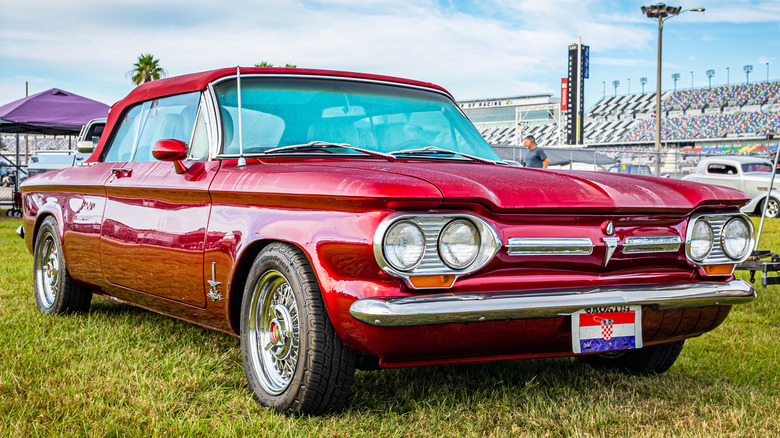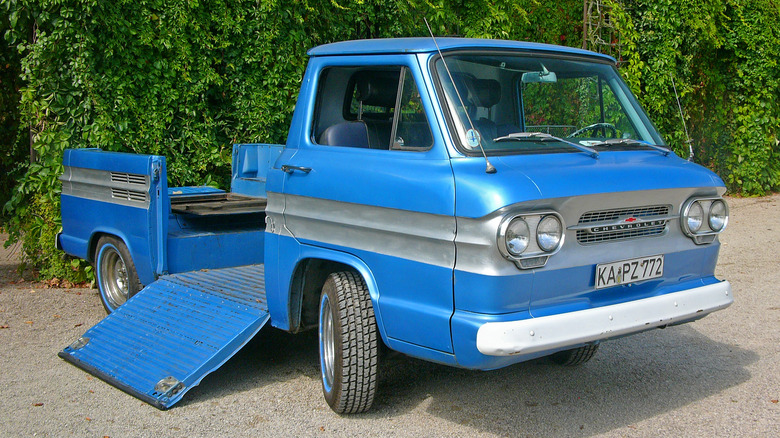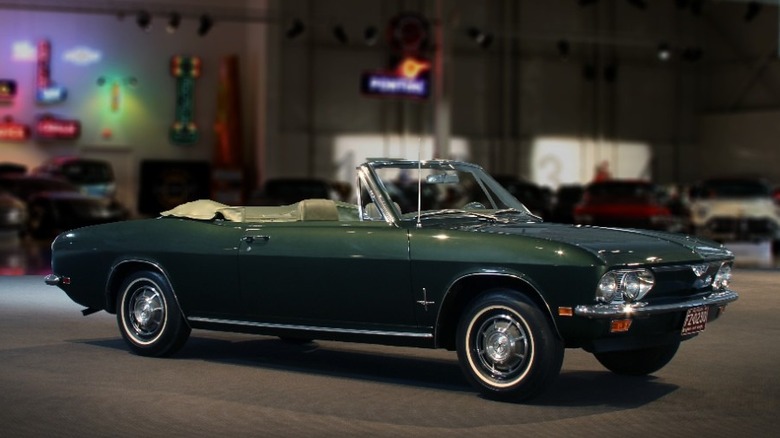What Were The Chevrolet Corvair's Biggest Problems & Why Did Chevy Stop Making Them?
The Chevrolet Corvair, one of the strangest Chevrolets ever built, was an American take on the Volkswagen Beetle. Like the Beetle, it had an air-cooled engine in the rear. Unlike the Beetle, it featured contemporary styling, had a larger, more powerful flat six-cylinder engine (compared to the Beetle's flat four), and seating for six people. The Corvair was intended to be better than the Beetle in every way that mattered to Americans. By 1961, the Corvair lineup included sedan, coupe, station wagon, window van, panel van, and pickup truck.
Unfortunately, the Corvair story did not end happily. A combination of problems, ranging from cost-cutting decisions to a ham-handed attempt to discredit automotive safety crusader Ralph Nader, brought an end to a car that could have been developed into an engineering masterpiece. The introduction of the Ford Mustang and the subsequent ponycar craze also drew attention (and sales) away from the Corvair.
In a different world, the Corvair might have evolved to rival the Porsche 911 (first shown three years later in 1963) as a rear-engined sports car. By the time the Corvair had reached its second generation (1965-69 models), it had all the basic ingredients. These included a redesigned suspension and a turbocharged engine with 180 horsepower. Pretty good for the 1960s and an over a decade ahead of Porsche on turbocharging.
The Chevrolet Corvair's biggest problems
The first-generation Corvair (1960-64) featured single-jointed swing axles in its rear suspension, following the design of the first Volkswagen Beetle. These swing axles were common on the Beetle, as well as other European rear-engined cars. The difference with the Corvair was that its engine was bigger and heavier than the Beetle's. This design put 60-63% of the Corvair's weight on its rear wheels, producing a more severe effect on the handling during extreme maneuvers. The bias-ply tires used at the time were part of the problem and easily broke loose, producing rear-end slides.
Compounding this was the need for Corvair owners to maintain different tire pressures front and rear (15 psi front, 26 psi rear) to combat the Corvair's tendency to oversteer due to its rearward weight bias. This was a practice completely unknown to American drivers used to front-engine, rear-drive cars and their same-pressure-front-and-rear recommendations. This tire pressure information was not reinforced in the owner's manual. Most normal drivers had no experience in how to handle an oversteering car like the Corvair.
The low-cost nature of the Corvair's entry-level mission led cost accountants to rule out adding either a front anti-roll bar or a rear camber-compensating spring to its suspension. These relatively inexpensive additions, well-known to GM engineers, could have made the first-gen Corvair's handling problems go away. It took until 1964 for these items to be added to the first-gen model, and in 1965 the second-gen Corvair debuted with an all-new suspension that eliminated the first-gen's flaws.
Why Did Chevy stop making the Chevrolet Corvair?
Of course, 1965 was also the year that Ralph Nader's book "Unsafe at Any Speed" came out. Its damning portrait of the first-gen Corvair's handling traits resulted in very bad publicity. In response, General Motors hired private investigators to smear Nader. When this was revealed by GM in Senate testimony, it backfired on the corporation big-time. Congress enacted the National Traffic and Motor Vehicle Safety Act in 1966, followed by the establishment of NHTSA (National Highway Traffic Safety Administration) in 1970. There would now be a government entity to oversee vehicle safety.
Chevy stopped making the Corvair in 1969, which ironically was three years later than they had originally planned to cease production. Once that the 1964 1/2 Ford Mustang was released and became a huge sales success, Chevy rushed its Mustang competitor, the Camaro, into production for 1967, planning to replace the Corvair with it. The unorthodox Corvair had become a literal liability, but Chevy did not want to admit it, so it kept Corvair production going until 1969.
The Mustang changed everything. After seeing how Ford took the bones of an ugly duckling economy car — the Ford Falcon — and turned it into a high-margin, big-selling swan of a Mustang – in classic colors – all the other manufacturers followed suit. The Mustang's long-hood, short-deck formula was quickly replicated, resulting in the births of the Chevy Camaro, Pontiac Firebird, Dodge Challenger, Plymouth Barracuda, Mercury Cougar, and AMC Javelin. Horsepower and sex appeal were in — economy cars were out.


